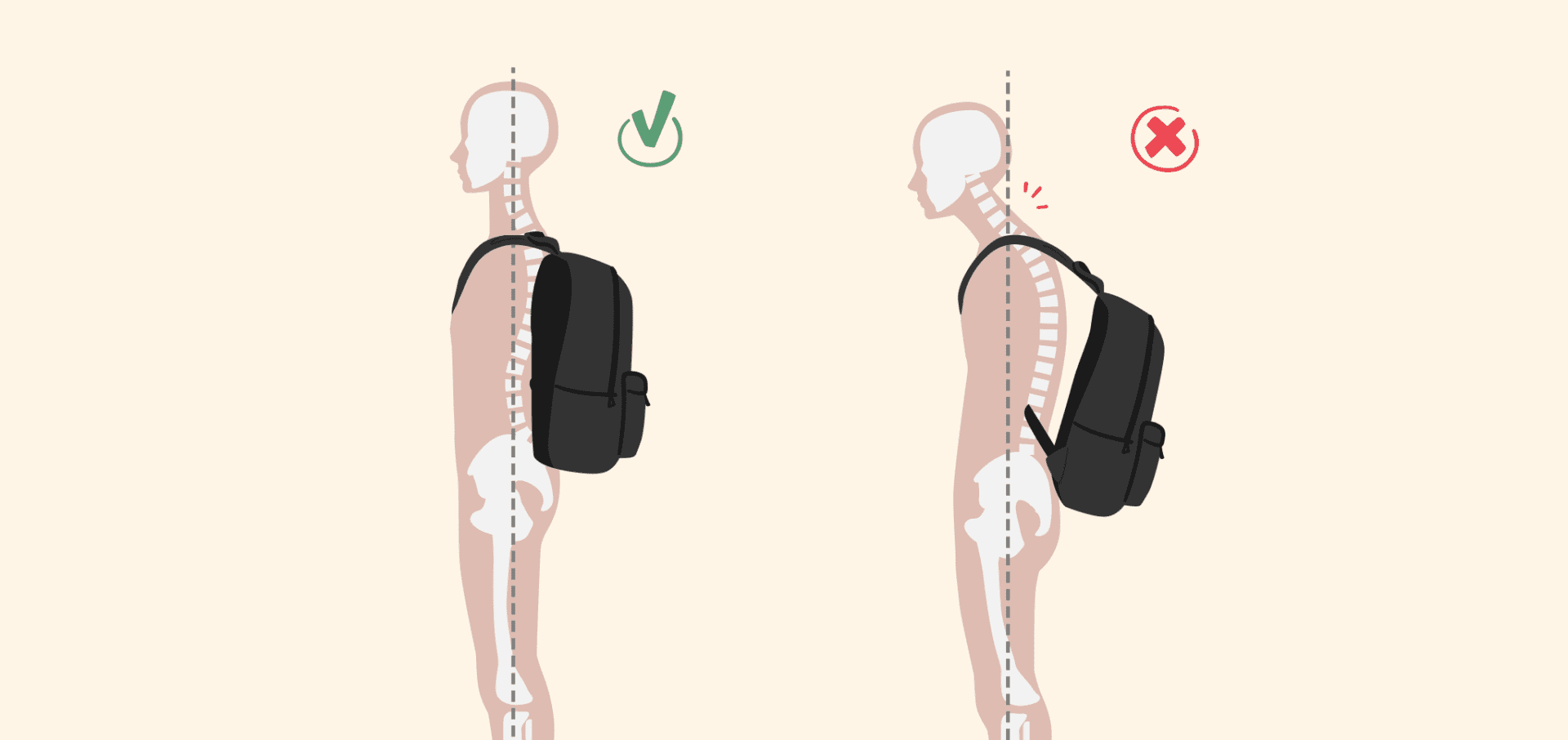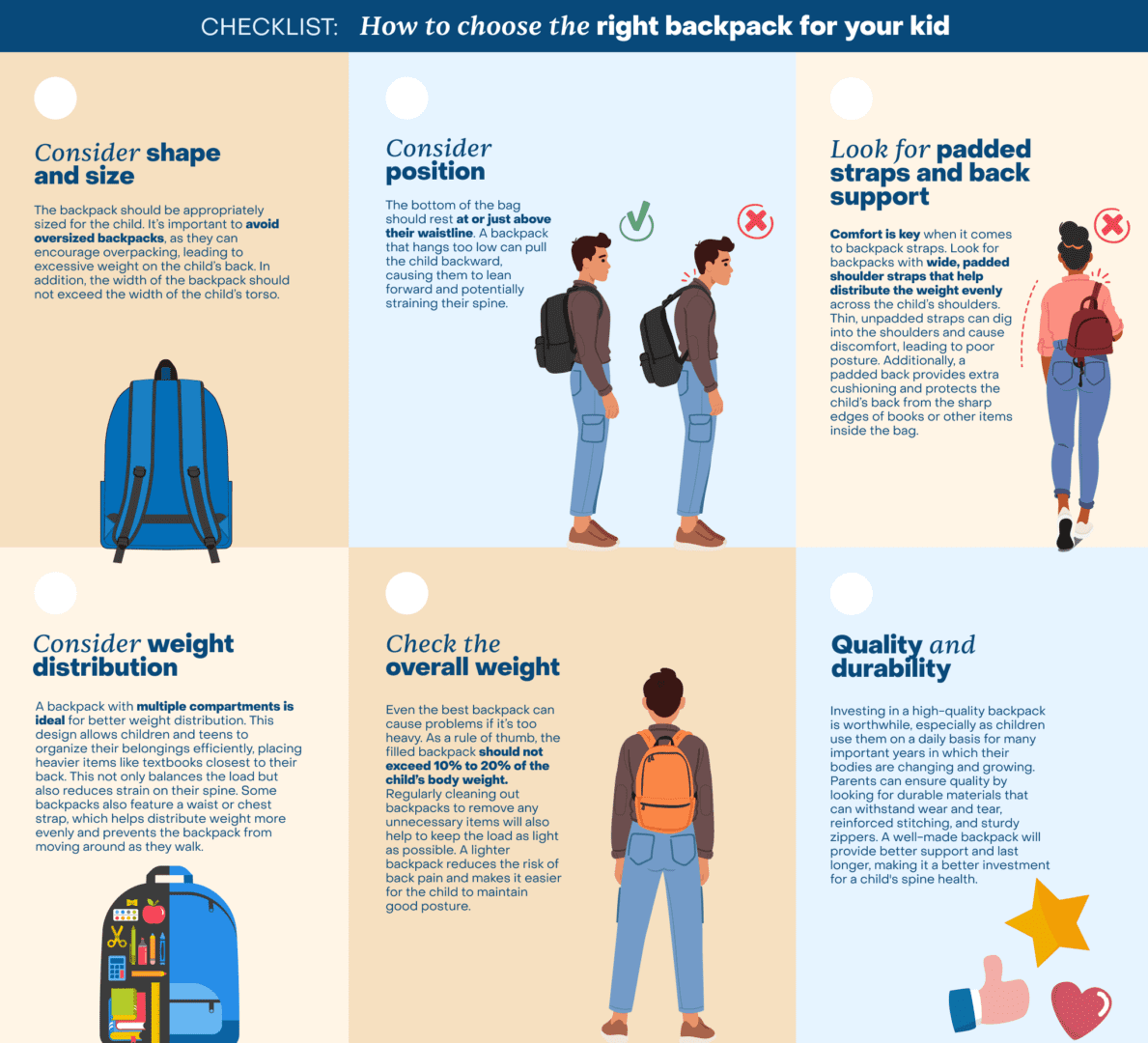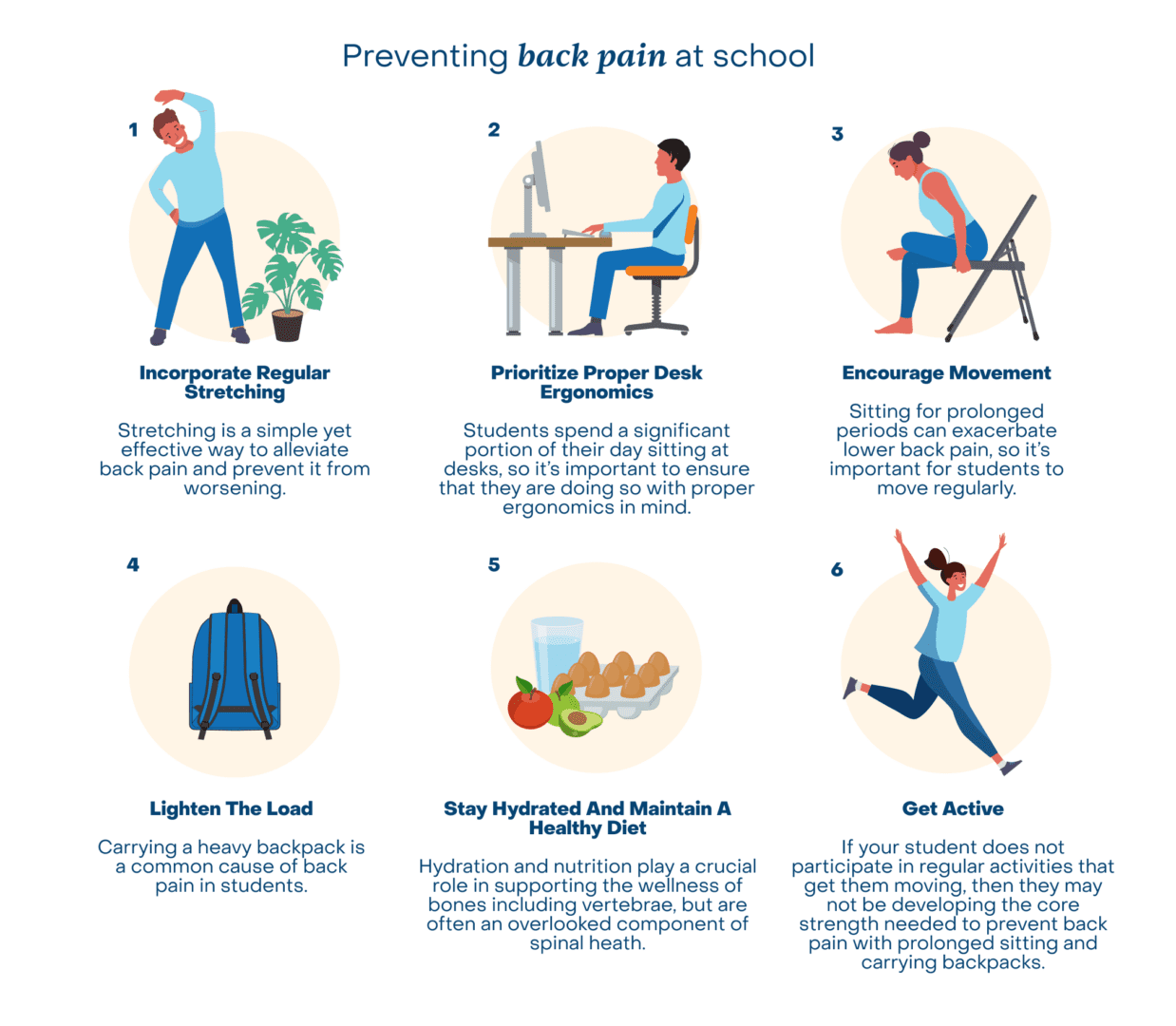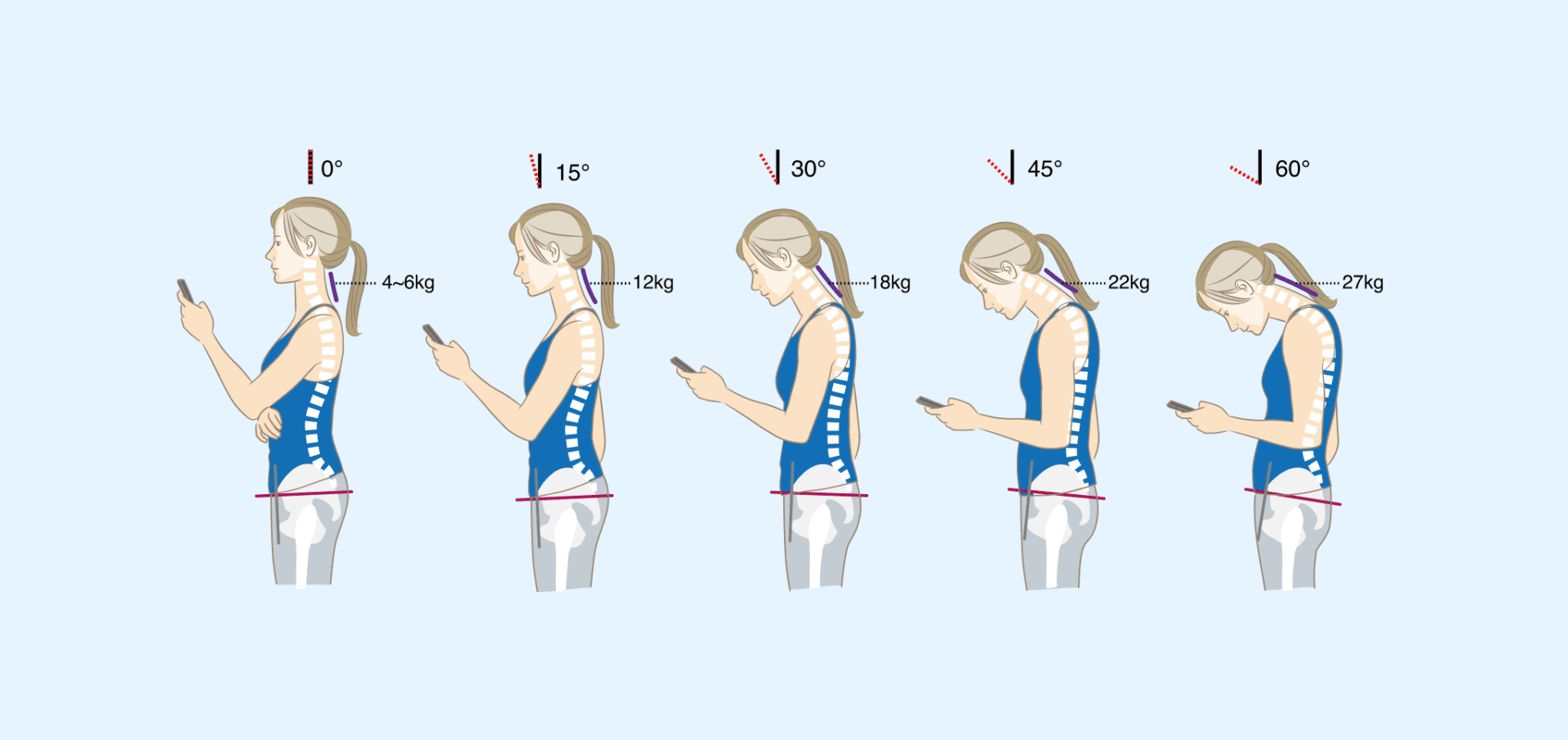Back pain is becoming increasingly common among children and teens with nearly half of them experiencing back pain at some point before they reach adulthood.
Research shows that low back pain is prevalent by the age of 14 years, with 30% of girls and 26% of boys experiencing acute or subacute lower back pain, and 11% reporting chronic back pain that lasts longer than 3 months. By the age of 17 years, 13% of girls and 26% of boys report having chronic low back pain. As many students return back to the classroom, one cause of back pain has become more apparent: the weight of their backpacks.
With a growing number of children and teens experiencing back pain before adulthood, it is important for parents and educators to understand the risks that children and teens face in their daily lives and how to address them, including the weight and daily use of backpacks.
In this article, we will discuss:
- Do backpacks cause back pain in children?
- How can you reduce the risk of back pain caused by backpacks?
- A guide to choosing the right backpack
- Preventing back pain at school
- What are other back pain risks for kids?
- The importance of good posture for children
Do backpacks cause back pain in children?
Heavy or improperly worn backpacks can cause back pain in children, making it crucial for parents and educators to recognize these risks.
The spines of children are still developing, so they are especially vulnerable to strain and injury. When a backpack is too heavy, the weight pulls the child backward. Children may lean forward or arch their backs to compensate, altering their natural posture. The weight of the load tends to settle toward the bottom of the bag, which increases pressure on the back and the supportive muscles of the spinal column. This can result in neck, shoulder, and back pain.

Offenses that cause strain and spinal compression, such as the additive effect from carrying heavy backpacks, can accumulate over time and contribute to serious long-term problems such as muscle imbalances, poor posture, and even nerve damage. This underscores the importance of addressing this issue, which is modifiable if armed with the proper information.

When choosing backpacks for children, it’s vital for parents to prioritize spine health. Understanding the appropriate weight limits—typically no more than 10% of the child’s body weight—is crucial in preventing potential injuries. This knowledge will make you feel informed and prepared.
An article published in the American Academy of Pediatrics (AAP) Grand Rounds Journal recommends that a child’s backpack should not exceed 10% of their body weight for all grades and all ages.
For example, a child weighing 70 pounds should carry a backpack that weighs no more than 7 pounds. However, studies have shown that students carry an average of 15% of their body weight. Carrying heavy weight, especially if the core muscles are not strong enough, can cause back pain.
How can you reduce the risk of back pain caused by backpacks?
To reduce the risk of back pain caused by backpacks, fit is important. Selecting the right size should be the first priority.
It’s tempting to use a larger bag because it holds more items, but reducing the size of a backpack can help keep the weight down by incentivizing children and parents to regularly clean out what is not needed. Parents can teach children how to best load their backpack by restricting the number of heavy items carried in the main compartment.
A good backpack should fit correctly and have several pockets and zippered areas so that the weight of the contents can be distributed more evenly throughout, rather than settling all at the bottom. Look for a strap that latches across the chest and one that connects around the waist. These reduce some of the weight in the shoulder and back areas. Also, wide and well-padded shoulder straps to cushion the shoulder area can reduce pain due to pressure. The shoulder straps must be adjustable to keep the backpack from hanging down too low.
How to select the right backpack for your child
There are steps that parents and caregivers can take to help select the right backpack to reduce the risk of spinal or posture-related issues in children and teens. A well-chosen backpack not only minimizes the risk of back and shoulder pain but also promotes good posture as a child grows. Here’s what to consider when choosing the perfect backpack:

1. Consider shape and size
The backpack should be appropriately sized for the child. It’s important to avoid oversized backpacks, as they can encourage overpacking and cause excessive weight on the child’s back. In addition, the width of the backpack should not exceed the width of the child’s torso, and the bottom of the bag should rest at or just above their waistline. A backpack that hangs too low can pull the child backward, causing them to lean forward and potentially straining their spine.
If the shoulder straps are fully tightened and the base of the backpack falls to the mid-buttock region or below, then get a smaller backpack. You can also try the sit test: the backpack should not touch the seat of the chair when your child is sitting down. If it does, then the backpack is too big.
2. Look for padded straps and back support
Comfort is key when it comes to backpack straps. Look for backpacks with wide, padded shoulder straps that help distribute the weight evenly across the child’s shoulders. Thin, unpadded straps can dig into the shoulders and cause discomfort, leading to poor posture. It’s also important to note that backpacks are designed to be worn with both shoulder straps. In fact, using just one strap unevenly distributes the weight of the backpack to one side of the body, which can affect spinal development and health. Additionally, a padded back provides extra cushioning and protects the child’s back from the sharp edges of books or other items inside the bag.
3. Consider weight distribution
A backpack with multiple compartments is ideal for better weight distribution. This design allows children and teens to organize their belongings efficiently, placing heavier items like textbooks closest to their back. This not only balances the load but also reduces strain on their spine. Some backpacks also feature a waist or chest strap, which helps distribute weight more evenly and prevents the backpack from moving around as they walk.
4. Check the overall weight
Even the best backpack can cause problems if it’s too heavy. As a rule of thumb, the filled backpack should not exceed 10% of the child’s body weight. Regularly cleaning out backpacks to remove any unnecessary items will also help to keep the load as light as possible. A lighter backpack reduces the risk of back pain and makes it easier for the child to maintain good posture.
5. Quality and durability
Investing in a high-quality backpack is worthwhile, especially as children use them on a daily basis for many important years in which their bodies are changing and growing. Parents can ensure quality by looking for durable materials that can withstand wear and tear, reinforced stitching, and sturdy zippers. A well-made backpack will provide better support and last longer, making it a better investment for a child’s spine health.
By taking the time to choose the right backpack, you can help ensure your child’s comfort and spine health throughout the school year. A properly selected backpack, combined with good posture habits, will contribute to their overall well-being and prevent potential back problems in the future.
In addition to finding the right backpack for each child’s individual needs, parents and caregivers can educate children with National Spine Health Foundation tips on how to avoid strain while wearing the backpack once selected.
Preventing back pain at school
Back pain can be a significant challenge for students, especially when it interferes with their ability to focus and participate in school activities. Whether it’s due to heavy backpacks, poor posture, or long hours sitting at a desk, back pain is increasingly common among children and teens. It’s important for parents and educators to be informed about the risks and strategies to help manage and prevent back pain during the school day.

1. Incorporate regular stretching
Stretching is a simple yet effective way to alleviate back pain and prevent it from worsening. Encouraging students to take short breaks throughout the day to stretch can help relieve tension in the back and neck muscles. Stretching helps improve flexibility, reduce muscle stiffness, and promote better posture. Simple stretches, such as shoulder rolls, neck tilts, and reaching for the toes, can make a big difference and can even be done while sitting at a desk.
2. Prioritize proper desk ergonomics
Students spend a significant portion of their day sitting at desks, so it’s important to ensure that they are doing so with proper ergonomics in mind. To maintain good posture, the desk and chair should be at a height that allows students to sit with their feet flat on the floor, knees at a 90-degree angle, and their back supported by the chair. The top of a computer screen should be at or slightly below eye level to prevent neck strain. Laptops are tricky to manage the correct height for the screen without creating issues reaching the keyboard. It is best to take frequent breaks away from the laptop to avoid straining the neck, shoulders, and eyes. If your student is larger or smaller than the average size for their grade level, ask your school if they provide properly fitting chairs and desks to meet their needs.
3. Encourage movement
Sitting for prolonged periods can exacerbate lower back pain, so it’s important for students to move regularly. Teachers and parents can encourage young people to stand up and walk around between classes or during recess. Exercise and physical activity – even a short walk – can help increase blood flow, relieve muscle tension, and reduce the risk of back pain. Schools support this by providing opportunities for physical activity throughout the day, whether through physical education classes, movement breaks, or outdoor recess.
4. Lighten the load
As mentioned in the previous sections, carrying a heavy backpack is a common cause of back pain in students. To manage and prevent back pain, parents and teachers can help make sure the child’s backpack is not overloaded. Teach them to pack only what they need for the day and to use both shoulder straps to distribute the weight evenly. If possible, encourage children to use a locker or leave unnecessary items at home to reduce the strain on their back.
Teach your children how to lift their backpacks or other heavy items properly by coaching them to bend at the knees, hold the object close to their body, and lift with their legs.
5. Stay hydrated and maintain a healthy diet
Hydration and nutrition play a crucial role in supporting the wellness of bones, including vertebrae, but are often overlooked components of spinal health. By encouraging a healthy lifestyle and diet as children are growing, the risk of developing debilitating issues later in life from spinal degeneration and osteoporosis are reduced.
6. Get Active
If your student does not participate in regular activities that get them moving, then they may not be developing the core strength needed to prevent back pain with prolonged sitting and carrying backpacks. Regular physical activity like swimming will help build muscular strength to support the back.
By incorporating these strategies, students can better manage back pain and enjoy a healthier, more comfortable school experience. Parents and teachers can work together to create an environment that supports spine health and prevents the onset of pain in young learners.
What are other back pain risks for kids?
“Text neck,” a condition caused by frequently looking down at phones, tablets, or other devices for long periods, can affect a child’s spine over time. Today’s youth are tech-savvy but have been exposed to technology often at very young ages, which can affect posture and pain. The impacts of these habits can have long-term effects on children.

The strain on your neck from looking at a phone or other handheld device for hours each day can have long-term effects. For example, the average human head weighs around 12 pounds, and when tilting your head forward, the pressure on your neck continues to increase. At a 15-degree angle, the head feels like it weighs 27 pounds. At 30 degrees, it’s 40 pounds. At 45 degrees, it’s 49 pounds, and at 60 degrees, it feels like 60 pounds. That is a lot of weight and pressure for the cervical spine (neck) to bear.
Additionally, the impact of people spending two to four hours a day hunched over their phones will eventually add up to 700 to 1,400 hours of neck strain per year. In a mini-narrative review of the text neck condition, the authors of the article identify the main issue is looking down for prolonged periods of time with the cervical spine in flexion, as when using a smartphone or tablet, reading on a laptop, or when protruding the head forward while viewing a computer screen.
The issue of text neck is only further compounded by daily heavy backpack use. Many children and teens are simultaneously adding strain to their necks from looking down at a device and from carrying weight on their backs without the proper support. As their spines are still developing, these factors together can impact their spine health well into adulthood. It is important that adults understand the factors that increase the risk of back pain in children and help them reduce the factors that lead to stress on the spine.
Setting time limits and taking frequent breaks can help prevent text neck. Holding devices higher to keep the chin off of the chest can be easily taught to children and adults when these devices must be used. Taking preventative measures will go a long way both now and in the future.
The importance of good posture for children
Posture refers to the alignment of the body when standing, sitting, or lying down. Good posture plays a critical role in the overall health and function of the spine.
To simplify this concept, the back should be relatively straight (not rounded) and the head should be kept in line with the buttocks.
For children and teens, maintaining good posture is especially important because their bones, muscles, and joints are still developing. The spine is the central support structure of the body, protecting the spinal cord and allowing us to move freely and maintain balance. When posture is poor, it can lead to a range of health issues, both in the short and long term.
Good posture ensures that the muscles and ligaments supporting the spine are used efficiently, which helps prevent strain and injury. When children maintain proper posture, their body weight is evenly distributed across the skeleton, reducing the risk of muscular fatigue and joint stress. This is particularly important during the growth spurts that occur in adolescence.
On the contrary, poor posture can lead to a variety of health issues that only worsen over time, including back pain, headaches, and fatigue.
In the short term, poor posture can cause discomfort and pain. Children may experience back, neck, and shoulder pain, headaches, and even fatigue as their muscles work harder to support an improperly aligned spine. These aches and pains can interfere with their ability to concentrate in school, participate in physical activities, and enjoy their daily lives. If left unaddressed, these symptoms can worsen over time, potentially leading to chronic pain and other complications.
One of the most common questions associated with poor posture in children and teens is the risk of developing spinal deformities. Conditions like scoliosis (a sideways curvature of the spine) and kyphosis (an excessive forward curvature of the upper back) can be exacerbated by poor posture.
While these conditions have a strong genetic component, poor posture and the uneven distribution of weight—such as from an improperly worn backpack—can contribute to symptoms associated with these conditions. Early detection and intervention are key to managing these conditions, but good posture habits play a role in their maintenance.
Conclusion
Parents and caregivers play a crucial role in helping children develop and maintain good posture habits. Being aware of the risks of heavy backpack usage every day and other factors on the spinal health of children and teens will help parents and teachers mitigate risks. In addition, encouraging children to take breaks, adjust their screen height, and practice good posture while using devices can help mitigate these risks. By setting a good example in their own technology usage, providing guidance, and creating an environment that promotes healthy habits, parents and caregivers can ensure that their children’s spines stay healthy.


